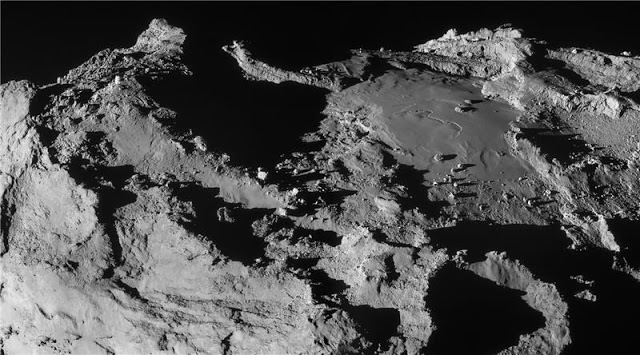| Online: | |
| Visits: | |
| Stories: |

| Story Views | |
| Now: | |
| Last Hour: | |
| Last 24 Hours: | |
| Total: | |
Organic Molecules Found on Comet, Key Elements in the Formation of Life on Earth
Ptolemy sprang into action when Philae bounced off Comet 67P/Churyumov-Gerasimenko last November. The lander kicked up a dust cloud which enabled Ptolemy – the gas analysis instrument on board, to sniff the particles on the surface. Ptolemy detected compounds containing carbon, hydrogen and oxygen – all of which are key elements in the formation of water and simple sugars. The compounds detected are not biogenic in nature and therefore do not indicate signs of life. According to Ian Wright, OU Professor of Planetary Sciences and Principal Investigator on Ptolemy, the compounds found are elements that “will have gone into the mix that led to the formation of the life on Earth”.
Not only has Ptolemy’s first analysis given scientists insight into what comets are made of, it has also revealed more about what chemical reactions occur on the surface. Ptolemy investigator Dr Andrew Morse said: “We now know more about the surface of comet 67P that we ever did before. Findings such as the fact that its surface is soft and dusty, but beneath that is hard layer of ice, will play an important part to inform plans for future comet landings and space exploration.”
Last month Philae tweeted back to Earth that it was alive and well after its solar-powered batteries ran down due to lack of sunlight. Now that the lander is awake scientists at the OU, and across Europe, are hoping that it will be able to continue capturing data about the comet and transmitting it back to Earth.
Contacts and sources:
The Open University (OU)
The paper ‘CHO-bearing organic compounds at the surface of 67P/Churyumov-Gerasimenko revealed by Ptolemy’ was published in Science magazine. It was authored by the OU Ptolemy team which consists of Dan Andrews, Simeon Barber, Geraint Morgan, Andrew Morse and Simon Sheridan, and is led by Professor Ian Wright.
http://www.sciencemag.org/content/349/6247/aab0673.abstract
Source:




